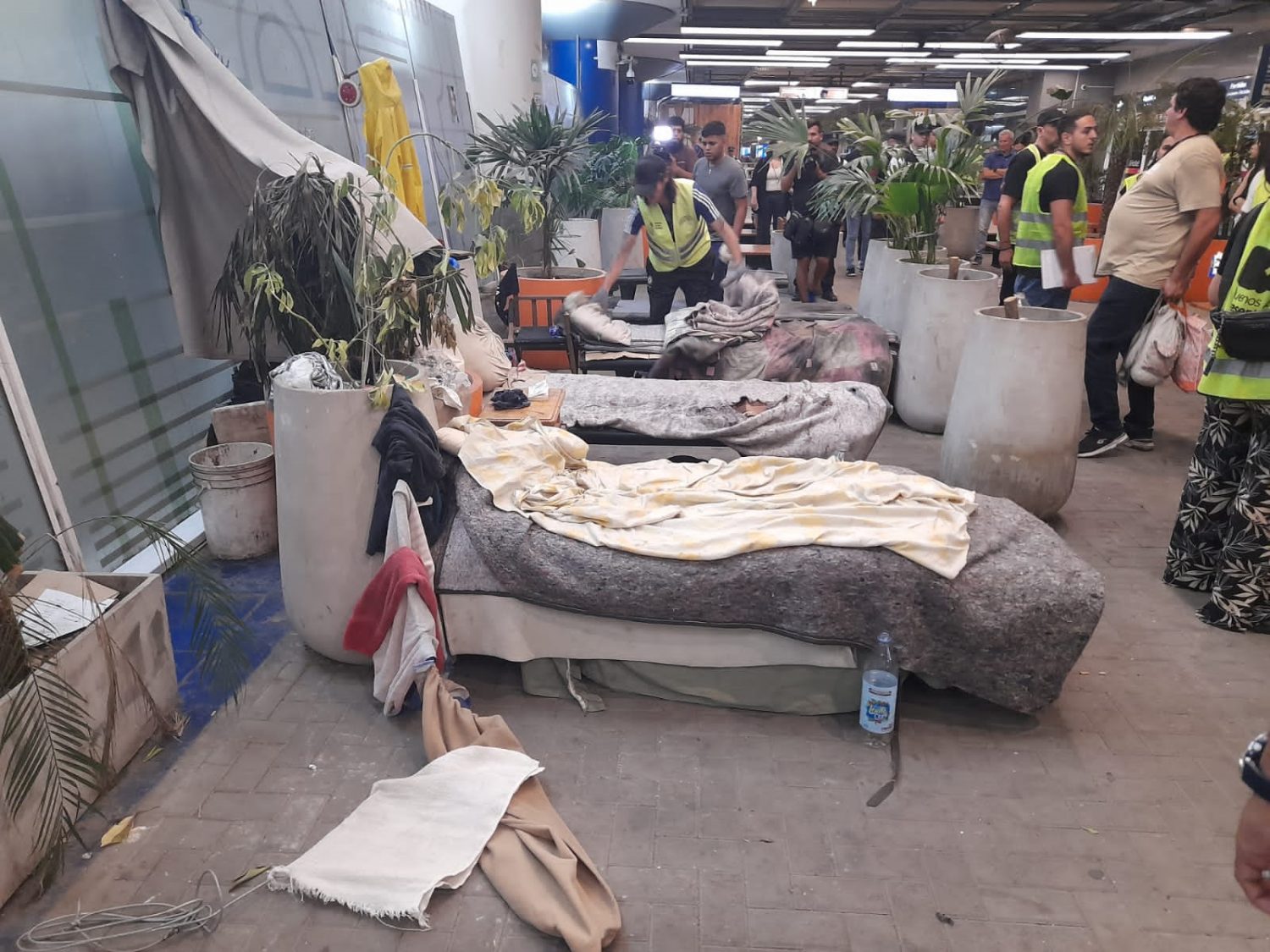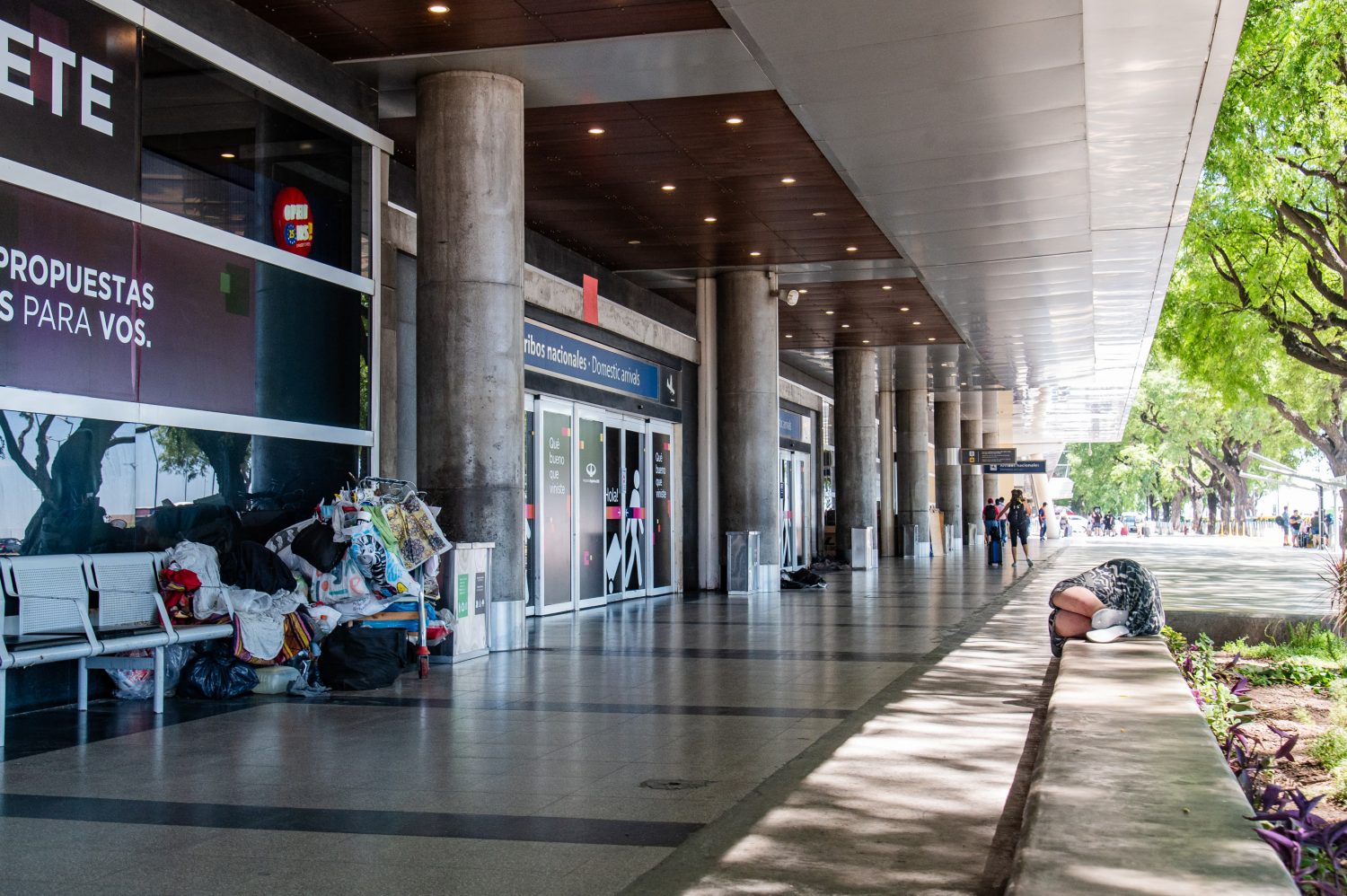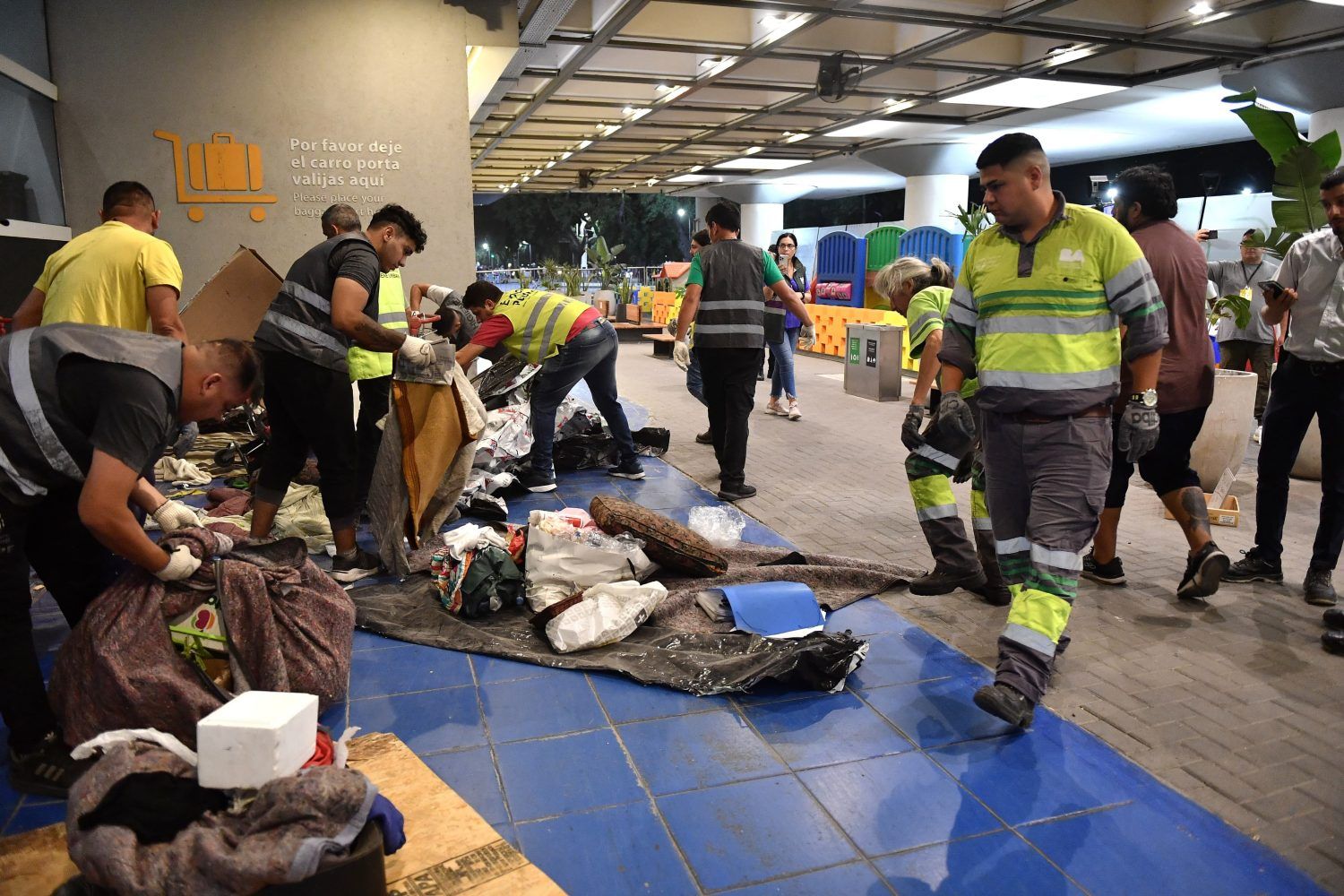Homeless Relocation Operation Completed at Buenos Aires Downtown Airport
During the night of Saturday and into the early hours of Sunday, the last eviction operation at Jorge Newbery Airport in the City of Buenos Aires was carried out, where homeless people were relocated to social inclusion centers. This is Argentina’s main domestic hub, located close to the city centre, unlike Ezeiza airport, which handles mainly medium and long-haul international flights and is 30 kilometres away.
This operation was the result of coordinated action among various national bodies and the Ministry of Human Development and Habitat of the City of Buenos Aires, which they defined as an effort to address the issue of homeless people who had settled in the airport terminal since 2023.
The phenomenon of people sleeping in the facilities of the Aeroparque (as it is known in Spanish) had escalated to a total of 160 individuals, a situation that prompted authorities to provide continuous assistance and seek solutions that would not affect the terminal’s operations or the passengers’ experience.

«We want an orderly city and work every day to make it happen. Solving the problem of homeless people, which goes hand in hand with a mental health policy, is essential,» stated the City’s Mayor, Jorge Macri.
As emphasized by the government of the City of Buenos Aires in a statement, public spaces are a common good and, as such, should not be used for housing. In light of this, the City Government has an assistance program that includes relocating these individuals to Social Inclusion Centers, where they are provided with comprehensive care, including personal hygiene items, access to showers, clothing, food, and a place to sleep.
The operation involved personnel from the Ministry of Human Development and Habitat and the Ministry of Public Space and Urban Hygiene of the City, along with the Airport Security Police (PSA), the National Airports System Regulatory Body (Orsna), and representatives from Airports Argentina 2000.

On this occasion, a total of 19 people (16 men and 3 women) were approached by teams from the Buenos Aires Presente (BAP) program. Of these, 8 accepted relocation to a Social Inclusion Center of the local government, while the remainder chose to leave on their own, claiming to have residence in other areas of the Greater Buenos Aires or provinces. Additionally, 6 precarious structures that had been erected on the Aeroparque esplanade were dismantled.
This operation, as pointed out by the government of the City, seeks not only to improve the aesthetics and functionality of the airport space but also to offer a chance for social reintegration to individuals in vulnerable situations, providing them with the necessary tools to rebuild their life projects and facilitate their integration into the labor market.


Para comentar, debés estar registradoPor favor, iniciá sesión